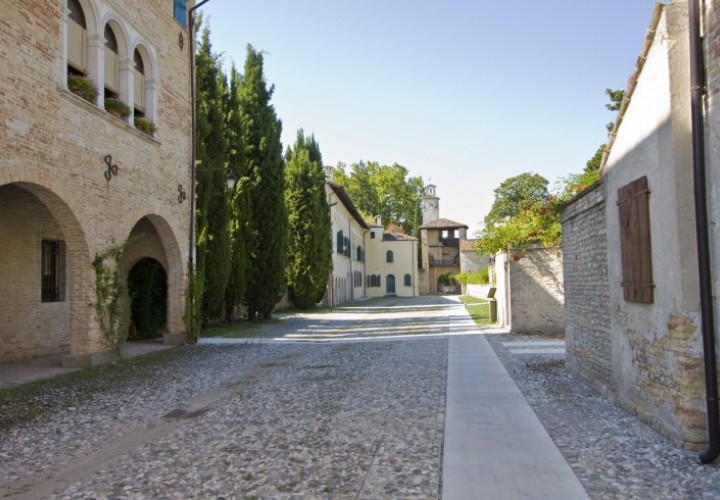Borgo di Cordovado

The hamlet of Cordovado is included amongst "the most beautiful hamlets in Italy". The fortified area of Cordovado, known as the Castle (XI century), is the result of changes and stratifications that have taken place over the years, particularly between the seventeenth and nineteenth centuries.
In the early Middle Ages,the outer circle of walls with a rampart, a moat and two gate towers still present, enclosed an inner space formed by the Bishop's castle, which in turn had walls and a moat with drawbridge, keep and other buildings.
Next to it stands the hamlet.
The medieval Cordovado therefore concentrates around the castle area, inside of which are some interesting buildings such as Palazzo Ridolfi, the captain's old house, Palazzo Bozza Marrubini, with frescoes inside by Francesco Zimolo (1704-1712), the elegant Palazzo Agricola that recalls Renaissance architecture with its wide arches and triple lancet windows.
Within the walls is Palazzo Freschi Piccolomini (1669-1704), initially called Attimis. The construction rising in the midst of secular grounds is an imposing Renaissance-style three-storey building with a large entrance door.
In the vicinity, near the north gate, stands the Church of San Girolamo (XIVcentury).
Of the two gate towers, the southern one preserves the postern, the northern one, also known as the clock tower, has a stairway and wooden walkways inside.
Along the south-eastern part of the walls are the remains of the moat and houses built within the grounds in the XIX century.
At the end of the seventeenth century some of the fortified part was demolished or converted into a civilian residence, thus giving rise to Palazzo Freschi Piccolomini.
More (The link you are accessing might not be in English.)
